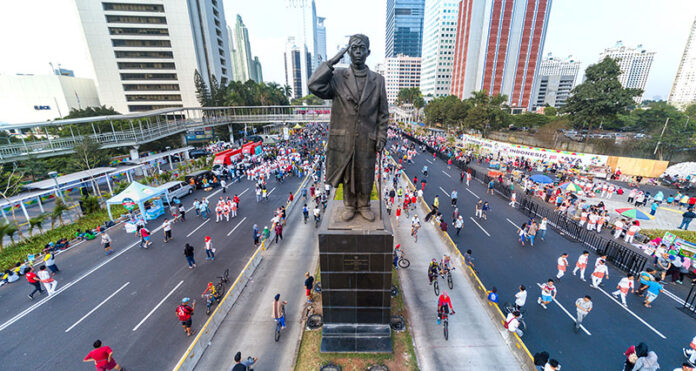Indonesia’s current population is around 275 million people, an increase of almost 35 million people from a decade ago and marking an annual population growth rate of around 1.25 percent, according to information provided by the Directorate General of Population and Civil Registration (Dukcapil) of the Ministry of Home Affairs of Indonesia.
The encouraging thing is that almost 70 percent of Indonesia’s population is in the productive age category, between 15 to 64 years. The remaining 30 percent are not yet productive or are not productive. A breakdown of this age category shows that nearly 25 percent of the population were aged up to 14 years and 6 percent are the age group of over 65 years. Thus, it was concluded, the dependency ratio or dependency ratio/dependency burden was 44 percent. The result is the ratio between the total population that has not/is not productive with the productive population.
This means that every 100 people or people of productive age bear around 44 people of non-productive age. A dependency ratio below 50 percent will last for 15 years. This indicates that Indonesia is entering an era of ‘demographic dividend’, namely the productive population is more than those who are not or have not been productive.
In relation to the 2045 vision, if the demographic dividend is managed professionally, this condition will become capital for Indonesia’s vision to reach one hundred years of independence in 2045. However, if it is not managed properly, it can become a burden to the state, both for economic growth and for state finances.
Indonesia’s population growth in the 2000-2010 period slowed to 1.5 percent. With this trend, Indonesia’s population is estimated to reach around 320 million people in 2045. The percentage of the elderly or elderly population continues to increase from 7.5 to almost 10 percent. This shows that Indonesia has begun to enter an ‘aging population’ structure. However, the 2020 Population Census shows that the productive age was around 70 percent, so Indonesia is entering a demographic dividend period. This means that the productive age is higher than the non-productive age, while the demographic bonus will end in 2040.
To overcome these problems, it is necessary to implement various policies, so that the quality of Indonesian human resources (HR) can support and play a role in national development. Aspects of HR competence can be carried out with social protection and health insurance, one of which is by improving health services that are efficient, effective and simple. The productive age of Indonesia’s population is a potential demographic bonus. Even so, we are also faced with the challenge of utilizing it so that we can provide additional bonuses for national development.
Measurement of the quality of the population refers to the achievement of the Human Development Index (IPM), namely education, health, and income / economy. HR education is the first and main component. Education will be able to change the way and thought of educators to be better, modern and advanced, and remain focused on advancing the younger generation through improving the quality of education. Ease of access to education, complete educational infrastructure and reliable, qualified teaching staff will create a modern society.
Furthermore, the provision of health services as a long-term investment is needed, as every human being needs good health. As a public service, the government seeks to improve the quality of public health with various policies such as national health insurance, health access, coverage of medical personnel, and affordable health facilities to increase human life expectancy.
On the other hand, the provision of employment opportunities plays a very important role, as a means to meet the daily needs of the community. The government and the private sector must facilitate employment for the community. Communities must also have competitiveness, be skilled and have the ability to be more creative in creating employment opportunities.
The change in population structure will also make Indonesia a consuming class in the world, namely people with adequate purchasing power. The Ministry of National Development Planning predicts that by 2040 upwards of 70 million people living in urban and rural areas will become a consuming class. This consuming class society will encourage economic growth from the domestic consumer side. But it will be negative if it is not accompanied by the ability to generate and invest yourself.
The quality of human resources is the basic capital in national development. For this reason, improving the quality of human resources must begin with fulfilling basic service needs, namely clothing, food and shelter, providing access to mental and physical health facilities, as well as innovative and productive applied education. Currently Indonesia is still far from that size.
Written by: Abhimanyu UGM Lecturer at Gadjah Mada University, Yogyakarta. Head of the Department of Economics and Business, UGM Vocational School. Head of Organizational Affairs, Association of Indonesian Economic Scholars.

















